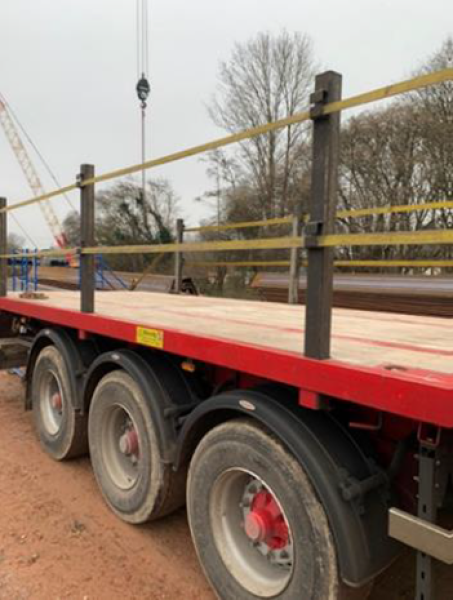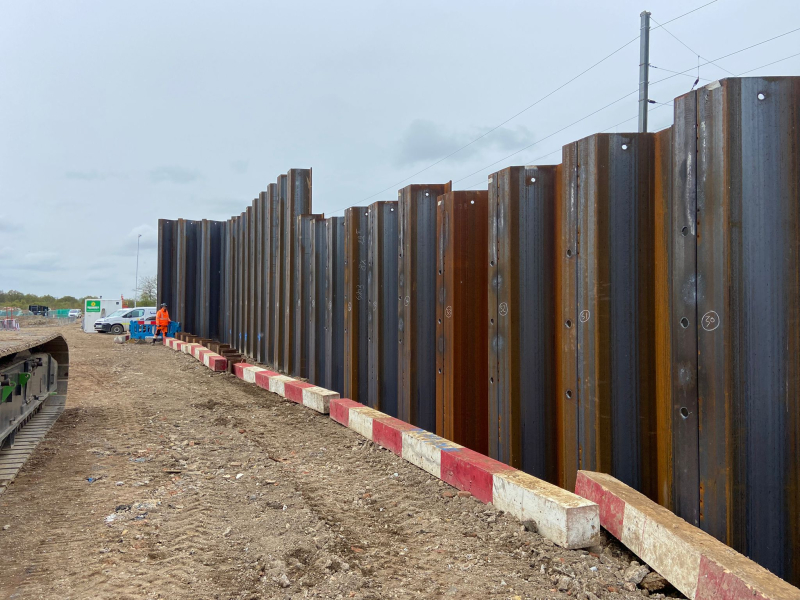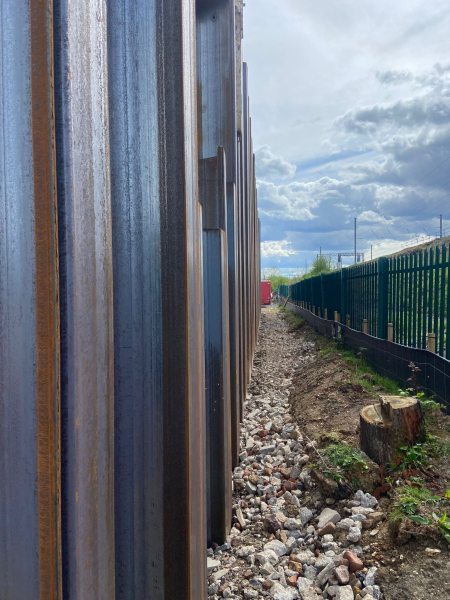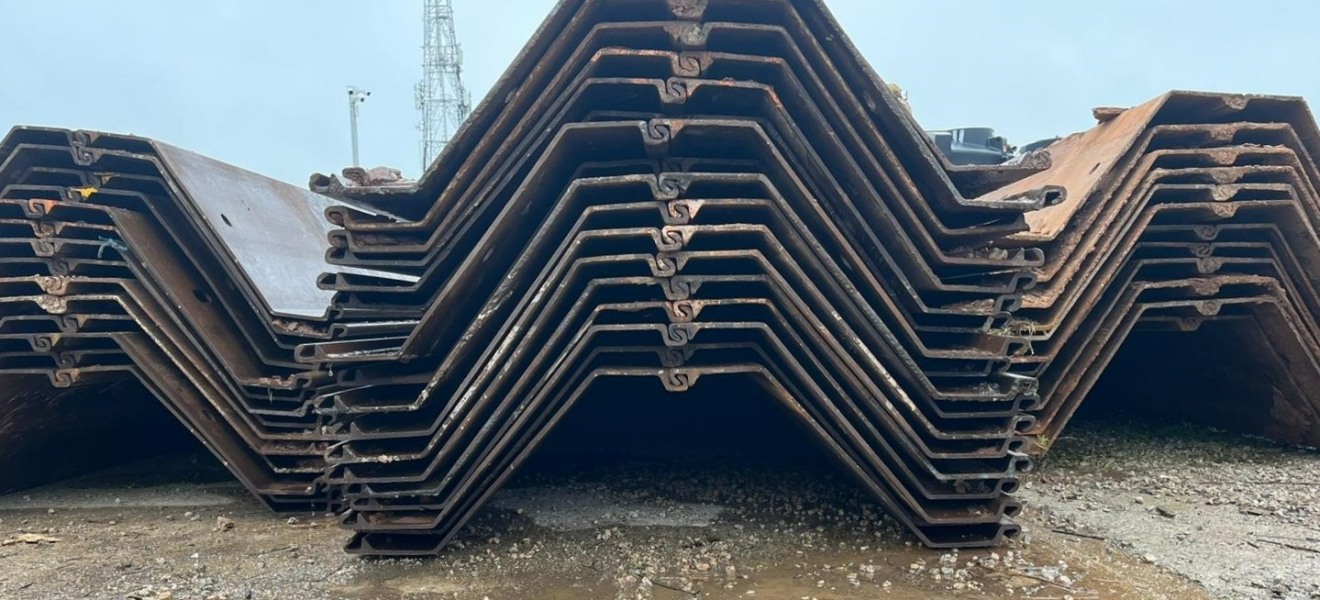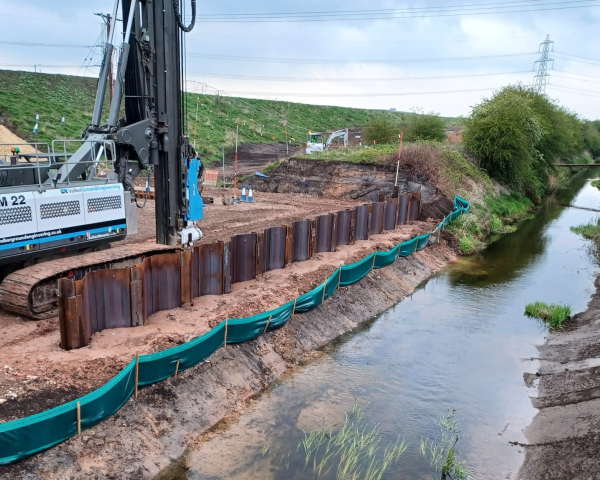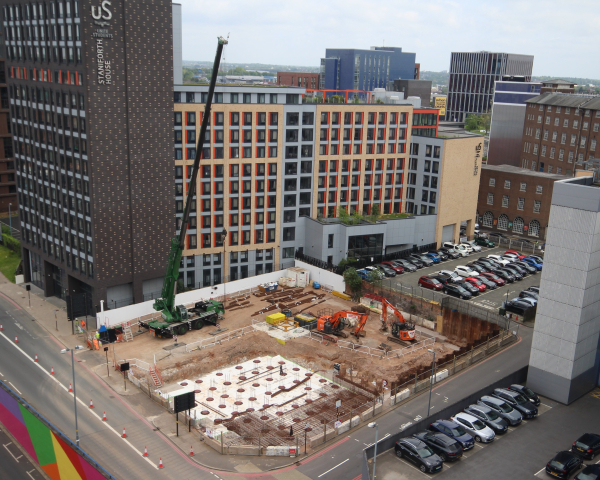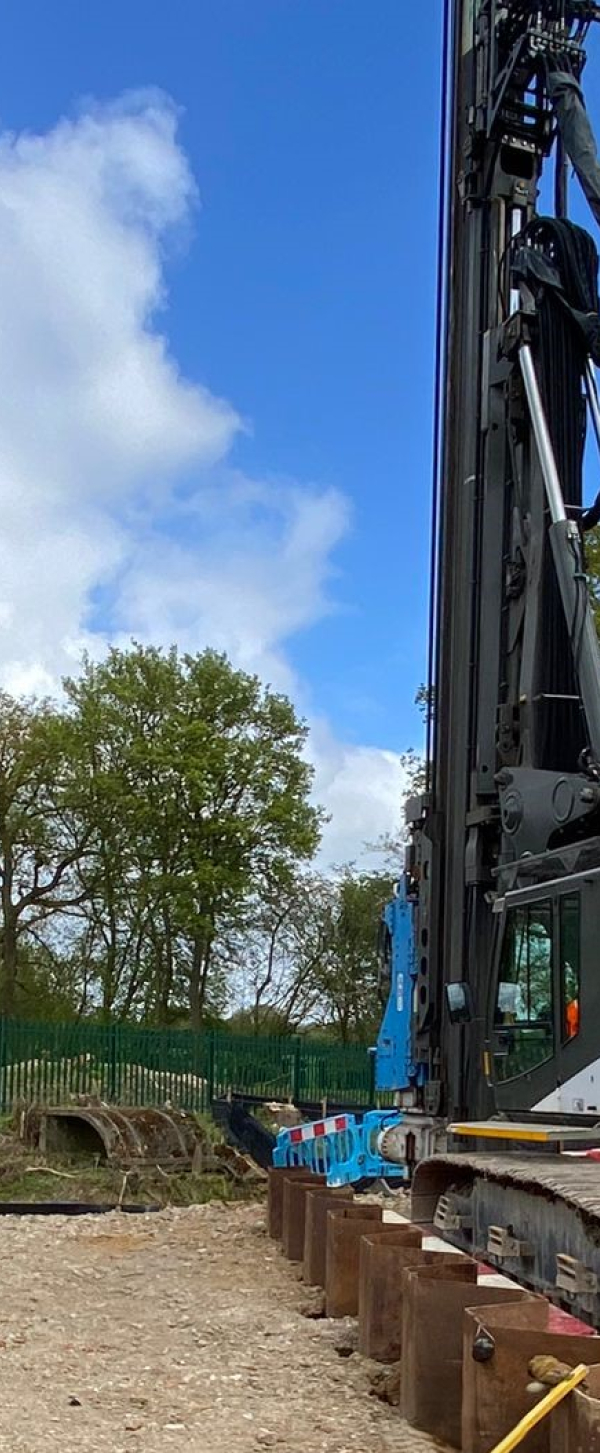
Radlett Strategic Rail Freight Interchange
VolkerGround Engineering installed a steel sheet pile retaining wall using a ABI TM22 leader rig, to facilitate the excavation and construction of a railway underpass launch slab.
The retaining wall had to be installed at the toe of an existing railway embankment, which posed significant logistical and technical challenges. These challenges were overcome by close working and clear and frequent communication with the VolkerFitzpatrick team.
Access restrictions meant that plant and materials were delivered to site via a single lane access track, which had to be reinforced to enable articulated vehicles to safely use the road. However, transporting the TM22 leader rig along this road was not possible, instead it was loaded and tracked over 1km to the works location for access to and from the site.
The permanent pile line was located on the far side of an existing drainage ditch, requiring a reach of over 4.5 metres. VolkerGround Engineering stabilised the pile platform by constructing a 20 linear metre temporary retaining wall, and pre-augering the stiff clays in order to install the 7m long steel sheet piles. The temporary steel sheet piles used were sourced from VolkerGround Engineering’s stock, enabling a rapid transition from contract award to project commencement. Utilising recycled piles also enhanced the scheme’s sustainability profile by lowering its carbon footprint.
As pre-augering was not possible along the permanent pile line at the toe of the railway embankment, the piles were installed by the TM22 and impact driven to design toe level by a SL30 impact hammer.
In November 2024, VolkerGround Engineering returned with the TM22 leader rig to install additional steel sheet piles. This phase was conducted under Network Rail’s overnight possession, as work was within the Network Rail boundary. These piles were installed to support the foundations of overhead line equipment, adjacent to a live railway, during the underpass installation.
The temporary piles were extracted and reinstalled further along the permanent pile line until all the piles were installed, again reducing any embedded carbon within the scheme.
